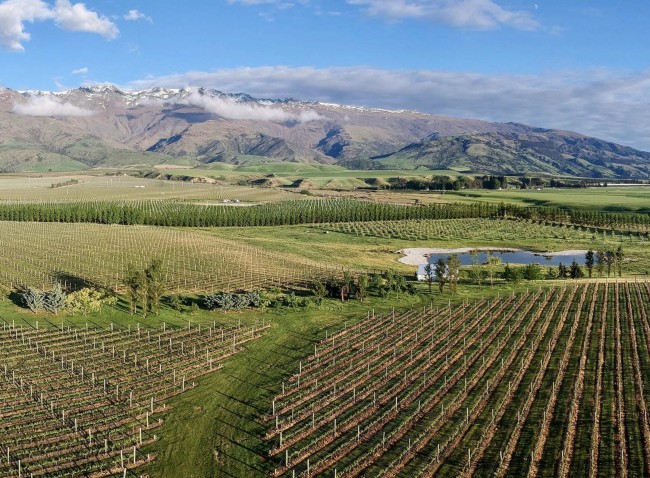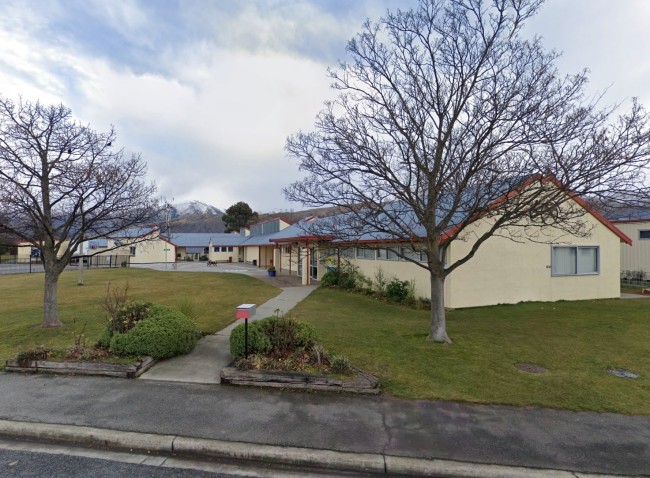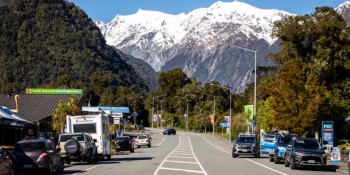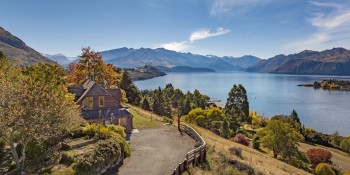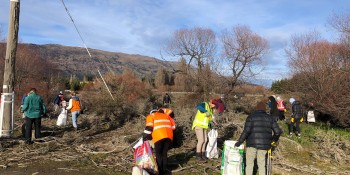
Pedestrian overbridge axed as arterial road cost-cutting continues
A planned pedestrian overbridge is one casualty of cost cutting measures on Queenstown's ballooning budget bypass route.
It has lead to fears that, once operational, the busy new road could cut pedestrians off from the lake and CBD.
Original plans for the arterial road included a bridge that would have allowed pedestrians to cross over the upgraded road at its intersection with Ballarat Street, but a report released to the public last month reveals the bridge was axed as early as December 2022.
According to Kā Huanui a Tāhuna, the alliance delivering the arterial road project, culling the bridge saves $3 million, and the decision was approved by the Queenstown Lakes District Council.
But some stakeholders were kept in the dark on the decision, which was made during a section of a council meeting that members of the public were excluded from.
At the February council meeting councillor Gavin Bartlett admitted that he was "not convinced that decision was adequately thought through" at the time.
He said reflecting back, "with a bit more experience", he has concerns about the level of consultation that was undertaken with regard to the Local Government Act.
Councillor Lisa Guy said she also shared Councillor Bartlett's concerns and would like to see "a line item in the LTP" that put the bridge back in.
Alan Grant is the tumuaki/principal at St Jospeh's School on Beetham Street, a stone's throw away from the new arterial route.
He says the school community saw the pedestrian overbridge "as an essential link" between the school and town; without it, he is now worried about the safety of children coming and going.
"Many students walk or bike to school - some with parents or caregivers and some unsupervised - and walk to town after school. Groups of students regularly walk into or through town as part of our educational programmes, for example to the gardens or the ice-skating arena.
"On the arterial route, St Joseph’s is situated in the middle of a 500-metre stretch between planned signalised crossings and we are extremely concerned about students safely crossing the road."
It is his view the school was shut out of the conversation, with neither the council nor the alliance consulting with them on the bridge's future, or even informing them of the decision once it was made, despite the school proactively involving itself in project planning up until that point.
"St Joseph’s first learned of this decision incidentally when it was briefly referred to in the QLDC Draft Annual Plan consultation document published in June 2023.
"This was despite numerous formal submissions, letters, oral representations in community liaison group meetings and in regular site meetings, expressing the paramount importance to our school of safe, intuitive, and easily recognisable crossing points and our connection with the CBD."
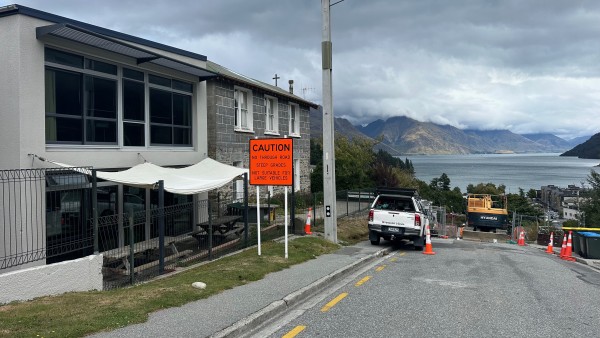
St Jospeh's School is on the edge of ongoing construction works related to the arterial road project.
Mr Grant says at a community liaison group meeting in June last year, representatives of the alliance declined to discuss either the removal of the overbridge, or a plan for a suitable pedestrian crossing with St Joseph’s, directing the school instead to the QLDC, who ultimately made the decision to remove it.
"Following a meeting in July 2023 with the mayor, two councillors and other QLDC staff including the (chief executive), St Joseph’s has continued to question the decision to not provide a safe crossing point. QLDC has stated in their correspondence that they will no longer discuss the matter with us, stating that it is their opinion that the planned signalised crossings and a pedestrian refuge near St Joseph’s Church are sufficient."
Belt tightening
The recently released report details other, largely aesthetic, compromises to stage one of the arterial road project.
A change of footpath material from concrete to asphalt is saving $1.7 million, and concrete being used for kerbing and channelling will now be a standard grey colour rather than having a dark tint added to it, saving $33,000.
Close to $60,000-worth of plants have been culled, while trees that will still be planted will be smaller in size, saving $117,000, and an unspecified amount of money could be saved by simply not watering any new plants, though that is still up for debate.
Decorative features with a $230,000 price tag have been dropped from a retaining wall that the alliance says will be obscured by the council's planned new office headquarters and civic space - Project Manawa.
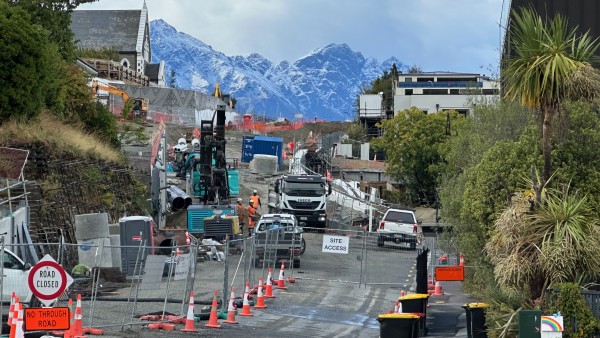
Arterial road under construction: ditching one lot of decorative panels has saved $230,000.
Crux has asked the alliance for a summary of what decorative panels will still appear on stage one of the arterial road, and how much they will cost.
Managers on the project are still considering other ways to pull back budgets, although they say "significant" savings at this late stage are "very limited".
Last month the Queenstown Lakes District Council approved a $17.65 million budget top up for stage one of the arterial road, off the back of a $20.6 million jump approved just 10 months prior.
It takes the total budget to $128 million for the first stage of the CBD bypass route that links Frankton Road to Gorge Road via Melbourne and Henry Streets, a distance of less than one kilometre.
The project was approved under a fast track consenting process in response to the Covid-19 pandemic.
Among the key objectives of the project are frequent references to improving the Queenstown CBD for pedestrians.
Read more: Tourists being blamed for $2m of Queenstown's arterial road blowout













